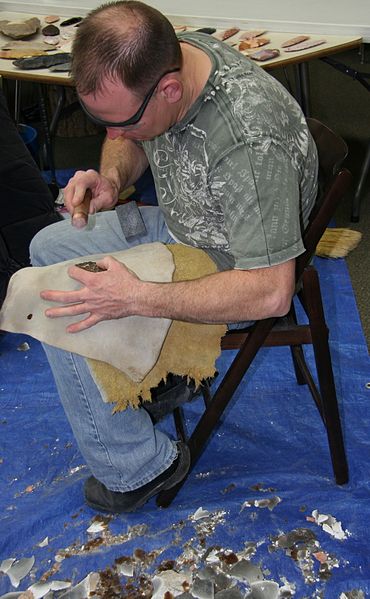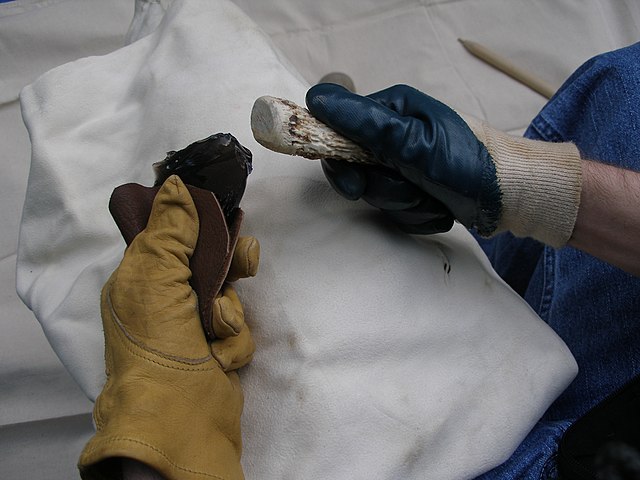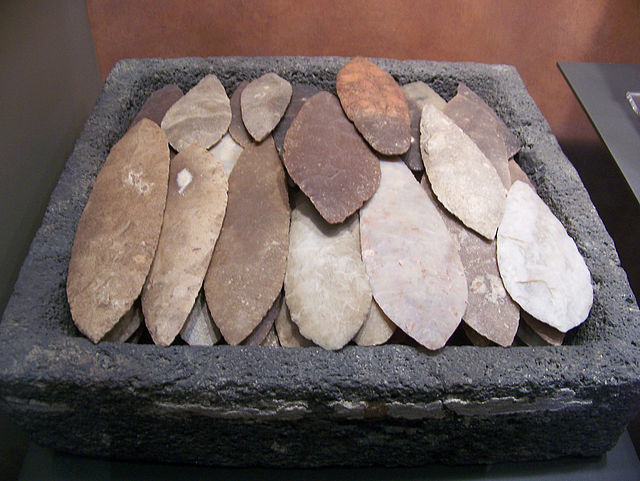Knapping is the shaping of flint, chert, obsidian, or other conchoidal fracturing stone through the process of lithic reduction to manufacture stone tools, strikers for flintlock firearms, or to produce flat-faced stones for building or facing walls, and flushwork decoration. The original Germanic term knopp meant to strike, shape, or work, so it could theoretically have referred equally well to making statues or dice. Modern usage is more specific, referring almost exclusively to the hand-tool pressure-flaking process pictured. It is distinguished from the more general verb "chip" and is different from "carve", and "cleave".
Flintknapping a stone tool
A leather leg guard protects the knapper from being injured by the edges of the flint.
Soft hammer knapping
Aztec stone knives
Flint, occasionally flintstone, is a sedimentary cryptocrystalline form of the mineral quartz, categorized as the variety of chert that occurs in chalk or marly limestone. Historically, flint was widely used to make stone tools and start fires.
A sample of Miorcani flint from the Cenomanian chalky marl layer of the Moldavian Plateau (c. 7.5 cm (3.0 in) wide)
A piece of flint 9–10 cm (3.5–3.9 in) long, weighing 171 grams
Silicified remains of algae and silica pseudomorph after halite in flint. Pebble of Loire near Marcigny, France. Image width: about 5 mm.
Pebble beach made up of flint nodules eroded from the nearby chalk cliffs, Cape Arkona, Rügen, northeast Germany








